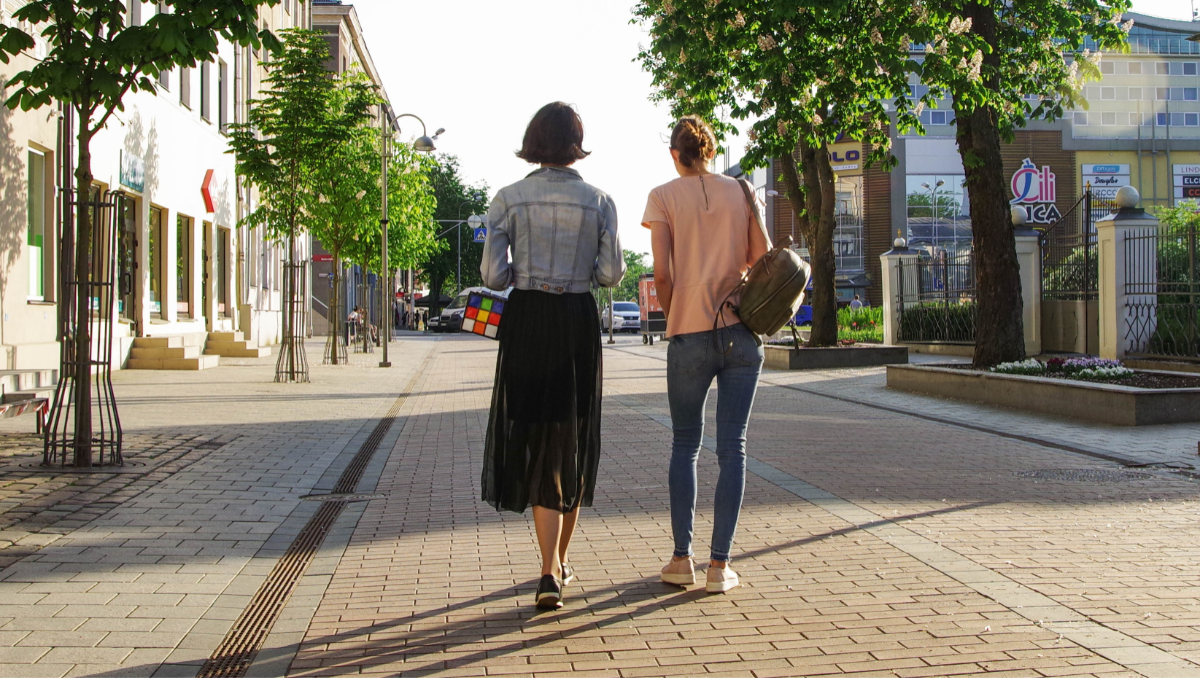A CEO raised everyone's salary to $70,000/year. The backlash against him doesn't make sense.
Back in April, Dan Price, CEO of Gravity Payments, announced a plan to cut his own salary in order to raise minimum pay at the company to $70,000/year.
Photo by Jimmyjay525/Wikimedia Commons.
And there was much rejoicing. At last, a CEO gets it! Finally, someone at the top is putting their money where their mouth is and striking against inequality!
And the best part: Everyone wins and no one loses!
But apparently, Price's announcement actually made some people feel like they had lost...
...including two higher-ranking employees at Gravity Payments, who said the blanket raise minimized their contributions to the organization, according to a July 31, 2015, report in the New York Times.
"Two of Mr. Price's most valued employees quit, spurred in part by their view that it was unfair to double the pay of some new hires while the longest-serving staff members got small or no raises."
Predictably, the story of the employee backlash began trending on social media almost immediately...
...fueled largely by the gloating of America's uncles.
"I told you so. Economics. Natural selection. The Fountainhead." — Your uncle. Photo by Matthew G/Flickr.
"This is why you can't reward laziness," your uncle probably posted on Facebook. "It's bad for business, and it disrespects the hard work of hard-working people."
According to some economic theories, it's human nature to think like this.
Equity theory, which was developed by psychologist J. Stacy Adams in 1963, claims that if one group of people within an organization discover that a second group of people within the same organization are being compensated similarly for work they perceive to be less valuable, the first group of people get — to use a bit of social science terminology — "pretty pissed."
And look, if I were a disgruntled employee and a bunch of my colleagues who I didn't think deserved it got raises and I didn't, I might feel like quitting too.
But here's the thing: We're not economic theory. We are human beings. With free will! We don't have to act the way obscure social science texts predict we will.
In fact, in many cases, it actually makes more logical sense not to. Even though it feels unfair.
If you think about it that way, the backlash against Price really doesn't add up.
Let's break it down, point by point.
"It's unfair that people who aren't doing as hard of a job as me are getting a lot more money, and I'm not."
B-b-b-b-b-b-b-b-b-but. But. But ... ... But. ......... But. Image via Thinkstock.
You're a software engineer at a credit card processing company. You're making $150K/year. The guy in the boiler room makes $35K/year.
Then, boom. Your CEO makes a random announcement on a Monday morning, and suddenly the guy in the (figurative) boiler room is making $70K/year. And you're pissed! "What did he do to deserve that?" you wonder. "Why does he get so lucky and I don't?"
Here's the catch: Nothing bad has happened to you. You're still doing great! It's just ... some other people are making less-not-as-much-money-as-you than before.
Yeah, the other guy just ran into a boatload of cash, and that feels unfair. But the important thing to remember is that you are still making the same amount of money as before.
Is the guy in the boiler room only worth 20% what you're worth — or half as much? Not so long ago, the latter seemed fair. Now, no one blinks an eye when CEOs make 373 times more than the average U.S. worker. But when it comes down to it, it's ... kind of arbitrary.
Either way, economic theory states you're only mad because someone else is doing better than they were last week relative to you.
That seems a little ... I don't know. Just ... I don't know. Just think about it.
"But my salary isn't just how much I get paid. It's a measure of how important I am relative to other people."
I'll give you 50,000 reasons why I'm better than you! Image via Thinkstock.
Look, I totally get it. Many people, myself included, derive tons of satisfaction from earning a lot of money and knowing that other people don't earn as much. Not only does it feel completely amazing, it's only natural to tie the number on your paycheck to how valuable you are as a human being.
But what if ... I don't know — we didn't.
Like, what if we didn't measure our self-worth against how much money we made?
Just ... as something to try.
It's not that hard, actually! Here, for example, are some other ways you can measure your self-worth:
1. How good you are at basketball.
2. Whether you can build a boat.
3. Whether you're kind.
4. Whether you've eaten at all the restaurants featured on "Diners, Drive-ins, and Dives."
5. How many celebrities you know.
6. Whether you are a reliable, dependable friend, and/or you call your mother at least once a week.
These scales may not be as obvious. But they're really useful! Because there may come a time when you stop making a lot of money. For most people, it happens eventually.
And when that day comes, we'll be glad we had one of these bad boys in our back pocket. And that we called our mother all those times.
"But the work they do is not as hard as the work I do."
Not-hard work, apparently. Photo by Alfred T. Palmer/Library of Congress.
True, many of the people who received the largest raises at Gravity Payments fill traditionally "blue collar" roles in the company. People who, as one of the departing Gravity Payments employees artfully euphemism'd to the Times, clock in and clock out:
"The new pay scale also helped push Grant Moran, 29, Gravity's web developer, to leave. "I had a lot of mixed emotions," he said. His own salary was bumped up to $50,000 from $41,000 (the first stage of the raise), but the policy was nevertheless disconcerting. “Now the people who were just clocking in and out were making the same as me," he complained. “It shackles high performers to less motivated team members."
And, sure! For someone who spends their days doing the essential work of sitting in front of a computer screen debugging Java C++ or whatever, it must be really upsetting when your boss signals that your coworkers who spend their days lifting really heavy boxes are also important members of the team whose jobs contribute real value.
It must also be hard to see them get raises that make a real, material difference in their lives. Here's the Times, again (emphasis mine):
"Mr. Price has undoubtedly made an immediate difference in the lives of many of his employees. José Garcia, 30, who supervises an equipment team, was able to afford to move into the city and replace the worn tires on his car. Ms. Ortiz, who was briefly homeless as a child, can now visit her family in Burlington, Vt. Cody Boorman, 22, who handles operations out of his eastern Washington home, said he and his wife finally felt financially secure enough to start a family."
There are a few ways to react to this.
One way is to resent your coworkers and feel superior.
Another possible way is to be happy for them, instead of resenting them.
You could also try being more stoked that you are getting a raise than upset that someone else also is.
You could understand that, while your job is hard and one they probably wouldn't be able to do, their jobs are also hard, also important, and ones you probably wouldn't want, or even be able, to do.
You could consider that maybe the kind of work our society values and doesn't value is kind of arbitrary, and why shouldn't an equipment manager make the same salary as a web developer?
And you could realize that the financial security of your newly well-compensated colleagues will ultimately allow them to spend more of their brain space on improving the company and less on how they're going to feed their family night to night, thus benefitting the whole team.
It's asking a lot. But you could view it that way if you wanted to.
Here's the good news.
What, this isn't how you react to good news? Image via Thinkstock.
For all the commotion, all the articles, theories, and social media blowback, only two employees quit Gravity Payments as a result of the mass raise.
Two.
In a company of roughly 120.
That means 118 people stayed.
Gravity has its share of troubles. They're facing a major lawsuit (unrelated to the pay bump), which, combined with the pay increase, has created cash flow problems for the company.
Change is hard. And feelings can get complicated. It's human nature to compare yourself to others, and that gets even more fraught when money is involved. That seems to be what's playing out post-announcement. It doesn't mean anyone is a bad person — even the two people who quit.
But at the end of the day, 118 employees either benefited from the salary increase or felt that their own happiness wasn't dependent on the continuing relative misfortune of their coworkers.
It may not seem like much, but it's a decent start, at the very least.




 Mom ties kid's shoe.
Mom ties kid's shoe. Girl helping tie shoelaces on the trail.
Girl helping tie shoelaces on the trail.
 Women walking down a street.Image via Canva Photos.
Women walking down a street.Image via Canva Photos.  Woman aware of her surroundings in a parking garage. Image via Canva Photos.
Woman aware of her surroundings in a parking garage. Image via Canva Photos.
 Even when there's no assigned seat, everyone knows where they usually sit.
Even when there's no assigned seat, everyone knows where they usually sit.
 Season 3 Dancing GIF by Party Down
Season 3 Dancing GIF by Party Down  music video happy dance GIF by Apple Music
music video happy dance GIF by Apple Music